Although we use the term woodwind, not all woodwind instruments are actually made of wood anymore. For example, the flute used to be made out of wood, but nowadays it’s made out of metal and the saxophone is even made out of brass and always has been!
But, what they do all have in common is they use air (wind) to produce sounds. The woodwinds play a crucial role in creating a wide range of sound colors and are an important group of instruments in an orchestra.
In this post, we’re going to have a look at the four common woodwind instruments in an orchestra as well as some of the less common ones that you’ll see pop up occasionally. Let’s start off with the flute.
Flute

As a general instrument, the Flute exists in a wide variety of cultures worldwide, and also has a long history with the earliest discovered flute dating back to around 43,000 years ago.
Primitive flutes also had many different sizes, ranging from small pipes to giant eight-foot-long flutes. But the modern symphony orchestra uses a western concert flute that most resembles the flutes used in medieval Germany.
The flute contains a larger embouchure hole at the top that the player blows air across. The player can change notes based on the speed of the air or by finger different holes to open along the length of the flute.
You will most often hear flutes playing in softer sections where delicate music and soft sound textures are present.
But the flute can also play quite loudly, and you can hear it playing loud trills in the loudest moments in symphonic literature.
Piccolo
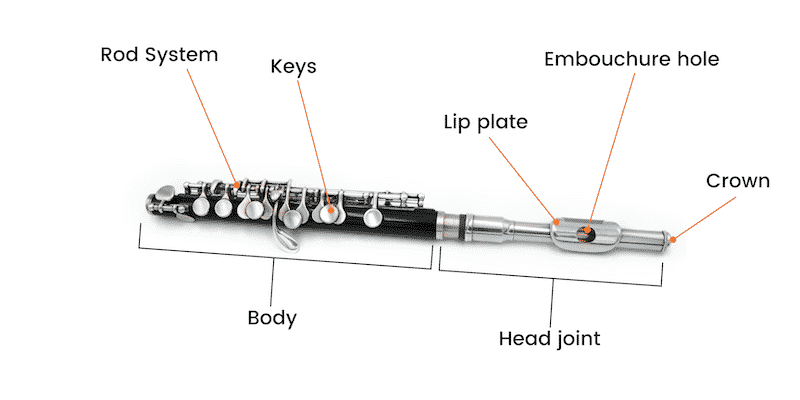
The Piccolo is a small version of the flute at half the size of the previously discussed standard flute. And by being half the size, it produces a sound that is one octave higher (eight notes higher) than the same notes on the regular flute.
In modern orchestras, there are typically between 2 and four flute players with one of those doubling on the piccolo.
While the piccolo occasionally plays solos, it most often plays musical lines along with other instruments when the situation calls for extra brilliance with a high pitched sound to cut through the orchestra.
This movement from Tchaikovsky’s Fourth symphony showcases the piccolo particularly well.
Clarinet
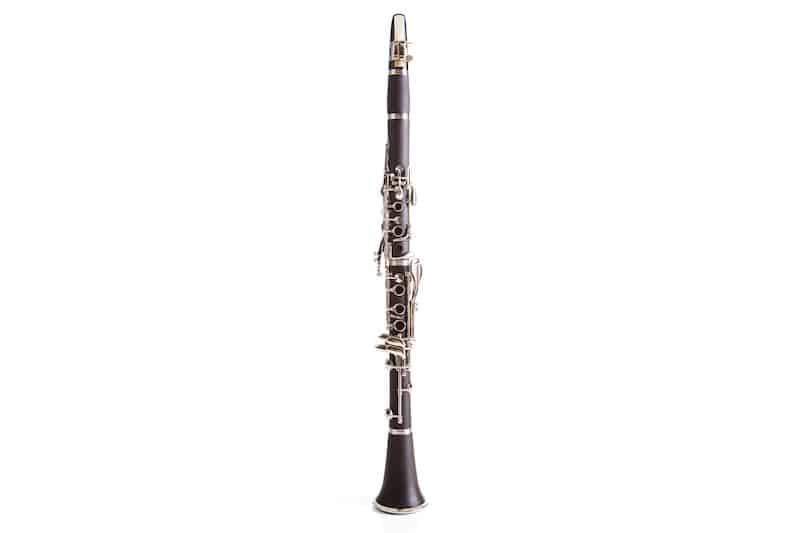
Usually sitting behind the flute section, the Clarinet is a woodwind instrument that uses a single reed to make a sound.
By blowing air across the reed, which is positioned in place at the mouthpiece, the instrument vibrates and resonates. The musician then covers the tone holes along the body of the clarinet which allows them to play different pitches.
The clarinet was invented in Germany around the year 1700, and like other instruments, it gradually evolved into its more modern form.
There are lots of different types of clarinet, but the most common ones are in the key of Bb, and they can range in sound from delicate and lyrical to loud and siren-like.
In an orchestra, you’ll typically find four clarinets with maybe one or two of those players also doubling on another type of clarinet, like a sopranino, alto or bass clarinet which we’ll look at later.
Oboe
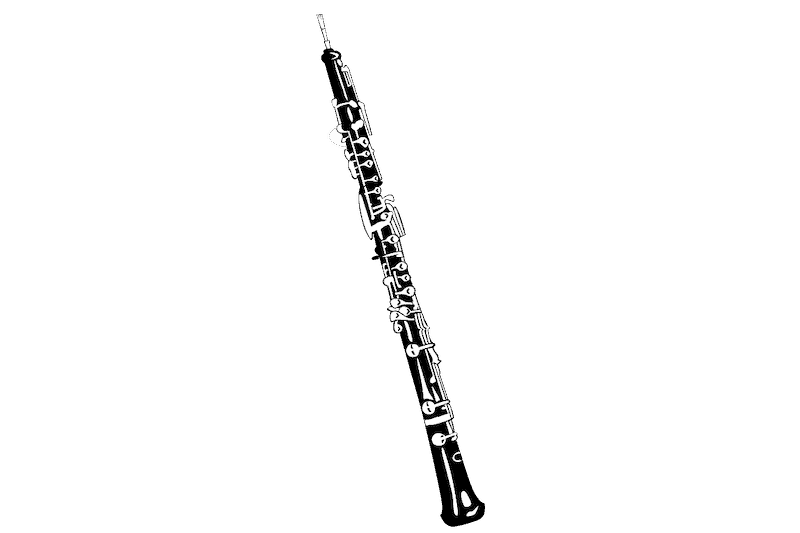
Unlike the single reed of the clarinet, the Oboe is a type of double reed instrument which means it uses two reeds to produce sound.
Double reeds require a careful carving of the reed structure to ensure the right sound, and part of the training for oboe includes learning how to carve and shape reeds properly.
The first oboes, which went by the French name hautbois (high pitched wind), first came onto the music scene in the mid-17th century in Paris.
It became a staple of baroque repertoire in the 17th and 18th centuries. And by the classical period, the oboe took on a narrower bore size and several metal keys to make playing easier.
The oboe has a particularly penetrating sound, considering that it is not pitched as high as an instrument like the piccolo. This rich and easy-to-hear sound is why the oboe is used as the tuning instrument of the orchestra.
Bassoon
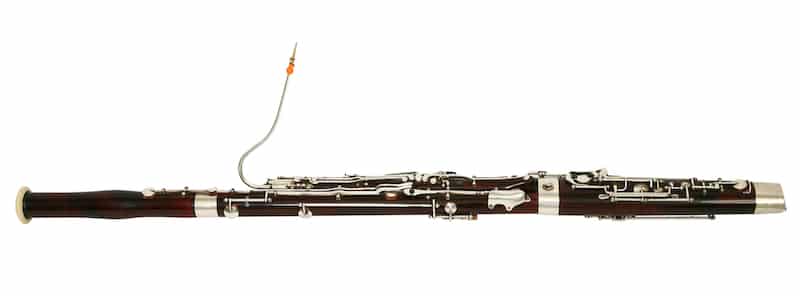
The Bassoon is the double reed instrument of the orchestra that plays in the tenor and bass ranges.
It produces a sound like an oboe, but its larger size means it can play lower notes with a large and full sound.
The bassoon breaks down into six different pieces, including the metal mouthpiece tube and the wooden reed that attaches to it.
Bassoon parts exist in the baroque period of music, and famous composers such as Bach and Teleman used it all the time.
But the baroque bassoon could not play loud, and for the modern symphony orchestra, the bassoon had to undergo some design changes. It now has 17 keys and a range of four octaves.
The bassoon most often serves the role of the foundation of the woodwind section.
Contrabassoon
The Contrabassoon, also called a Double Bassoon, is similar to the regular bassoon in sound production and fingering. But because of its larger size, contrabassoon can play an octave lower than its regular version.
The contrabassoon is not often called for in all orchestral works, so it is considered an auxiliary instrument. But, there will usually be a bassoonist who doubles on the contrabassoon for larger works that require it.
By the end of the 19th century, composers like Mahler, Brahms, and Richard Strauss used the contrabassoon regularly.
Cor Anglais (English Horn)
The Cor Anglais, or English Horn, is in the oboe family. As a double-reed instrument, it produces a sound very similar to an oboe.
But at 1.5 times the length and keyed a fifth lower than the oboe, the English horn makes a darker and richer sound compared to the oboe.
Besides the length and key, the English horn also has a bell in the shape of a pear, which helps to make it less brilliant and more blending.
This excerpt from Dvorak’s New World Symphony showcases the beauty of the English horn perfectly.
Eb Clarinet (Piccolo Clarinet)
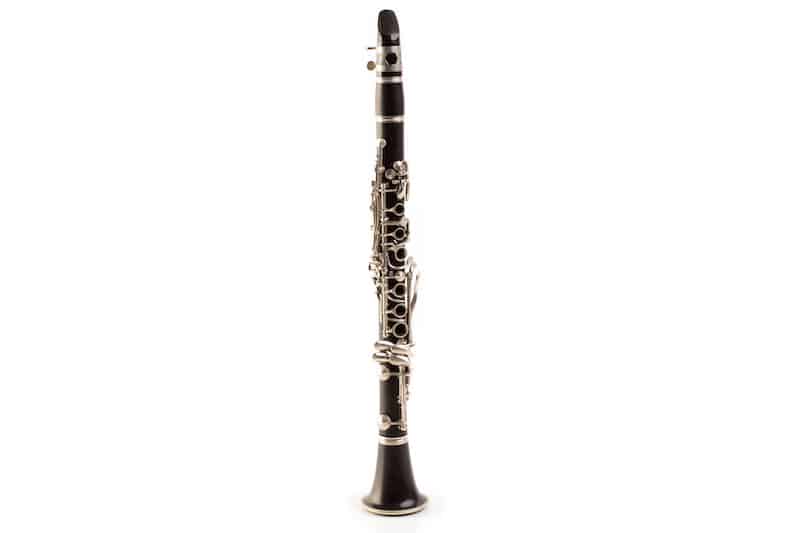
The Eb Clarinet is the piccolo version of the clarinet, pitched an interval of a fourth higher than the standard clarinet.
As an auxiliary instrument, the Eb clarinet is not in a lot of pieces. But when played, it has a high-pitched and piercing sound.
This short video of the Rite of Spring nicely demonstrates the sound of the Eb clarinet.
Bass and Contrabass Clarinets
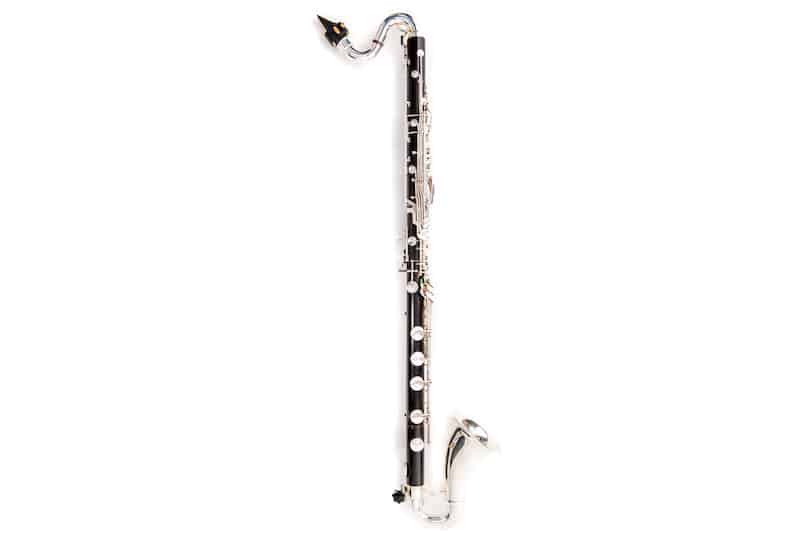
Just as the bassoon and oboe families had different instrument sizes with different sounds, the bass/contrabass clarinets are the auxiliary clarinets that play in the lower register.
The bass clarinet is also in the key of Bb, but it sounds one octave lower than the standard Bb clarinet and the contrabass clarinet is one octave below the bass clarinet!
In use since the mid-19th century, pieces with bass or contrabass clarinets give an extra boost to the bass range of the wind section.
Saxophone
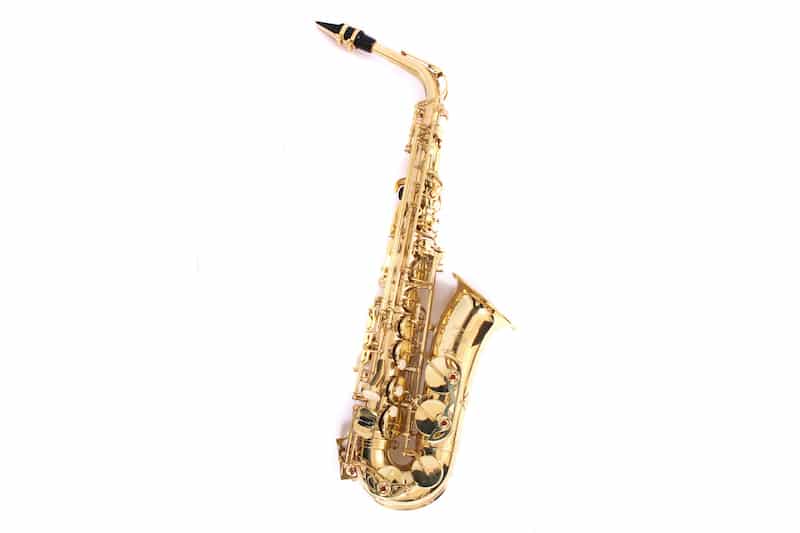
And lastly, we have the Saxophone which is a standard woodwind instrument in symphonic bands, but it very rare to be found in an orchestra.
Typically it is used in a solo situation, and there are rarely multiple saxophones used at once.
Like the other instruments, it comes in lots of different sizes like the soprano, alto, tenor, baritone but it’s the alto that you’ll often see used in classical music.
This solo from Mussorgsky’s Pictures at an Exhibition showcases a famous saxophone solo in orchestral literature.
Conclusion
Now that you have taken a tour through the wind section of a symphony orchestra, you should be able to enjoy a more detailed listening experience the next time you hear a concert.
Knowing the history of these instruments and their range of sounds will add to the emotional experience of the music as a whole.
